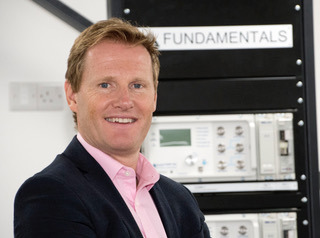Across the world, global electricity demand is on the rise. The International Energy Agency (IEA)’s semi-annual report electricity report revealed global electricity demand rose by more than 6 per cent in 2021 and it predicts it will rise by another 2.7 per cent annually between 2022-2024. At the same time, the UK is committed to achieving its Net Zero target by 2050, relying on renewable energy and low carbon technology to meet additional demand and create an affordable energy system in a sustainable way.
While the exact balance of low carbon and renewable sources has yet to be decided, balancing security, sustainability and cost will require a whole-system view of the energy industry. Technologies like artificial intelligence (AI) and digital twins are coming to the fore as tools that can model demand and predict how a diverse range of energy sources can be used to achieve smarter energy consumption and deliver net zero.
Mapping out the energy landscape, digitally
The UK’s National Grid Electricity System Operator (ESO) has already launched a programme to build a digital replica of the country’s entire energy landscape. The programme, claimed to be a world first, will create a virtual environment in which to share data, and to model and predict scenarios which support decarbonisation.
The virtual energy system will be a digital twin. It will work in parallel with the physical energy system to enable an accessible, unified, real-time view of every part of the UK’s energy system. Armed with this insight, the industry can begin to think about how modelling can be used to optimise electrical grids, and in particular their ability to cope with short surges in energy demand.
The project also requires a deeper understanding of how energy is consumed in people’s houses, on their journeys to work, within businesses and how that compares with local, national and international energy networks. In doing so, new ideas and scenarios can be modelled with a view to reducing carbon emissions, supporting the transition to net zero while delivering long-term value to industry and consumers.
A smarter approach to managing short-term demand?
The traditional way to deal with short-term demand has been to have an excess number of generators, a mismatch which leads to higher carbon emissions. These traditional methods also take little or no account of distributed energy resources such as rooftop solar panels.
However, using communications technology and Demand-Responsive (DR) programmes, it is possible to incentivise lower usage of electricity during peak times. The mechanism is price — and informing users in advance of the reduced prices outside peak hours. Such an approach can also integrate distributed energy sources and alleviate the load on the grid whenever necessary. However, few studies have explored the true potential of DR programs.
To address this knowledge gap, a team of scientists from the Gwangju Institute of Science and Technology (GIST) in Korea has developed a novel AI based approach that analyses and extracts the behaviour of grid users in terms of energy consumption per household. The study describes a data-driven framework that estimates the optimal DR management for each household. This considers user appliances and behaviour patterns as well as the predicted generation of energy from distributed sources, and the researchers tested their model through simulations using data from the real world.
The study demonstrated how AI can be used to improve electricity consumption, converting information about household energy demand into large-scale integrated resources and realising both lower prices and a smaller carbon footprint. The study also highlighted informing customers about prices in real time has limited impact unless you add automation to convert this directly into action – people don’t sit around looking at meters and coloured lights. The approach has potential application in other areas, according to the team behind it. These include water, heat, gas and electric vehicles.
Looking ahead
The challenge for the energy industry is how to gather and use information with suitable levels of spatial and temporal detail for similar projects. Using AI more effectively requires the industry to think differently about what data does for them. It requires a deeper understanding about what level of granularity of data is needed for which application. While fast data may be required for some applications to operate, other levels of analysis need slower forms of data.
Embracing these new technologies also relies on information being able to flow securely and seamlessly across widely diverse systems. The Energy Digitalisation Taskforce and The Energy Data Taskforce are accelerating digitalisation of the energy system. Cloud computing, AI, wide area, and wireless networks are likely become an integral part of utility communication networks. This doesn’t mean the existing infrastructure that is already in place needs to be replaced. But it does mean there is a need to upgrade and unify existing communications so legacy control and automation schemes can transition into more complex data-intensive future platforms. Only then will it be possible to use any communication input and get one streamlined output that acts as a translator between different communication protocols. And, realise the full potential of digital technologies by turning data into useful information.

By Jon Hiscock, CEO, Fundamentals ltd











Breaking the 15MW Barrier with Next-Gen Wind Turbines
The key point s that wind power is intermittent. There is a lot of crowing when it is the main source of power generation but things fall silent when...